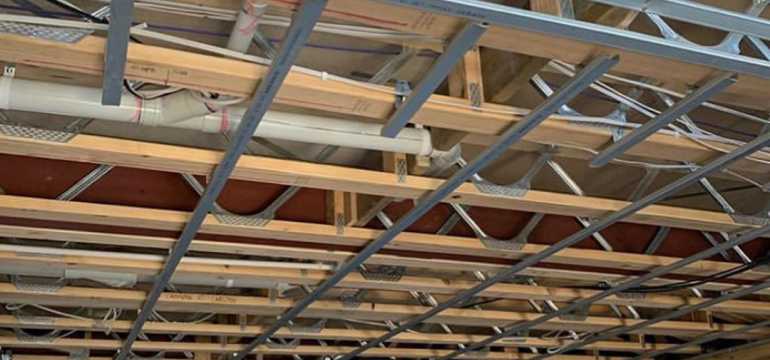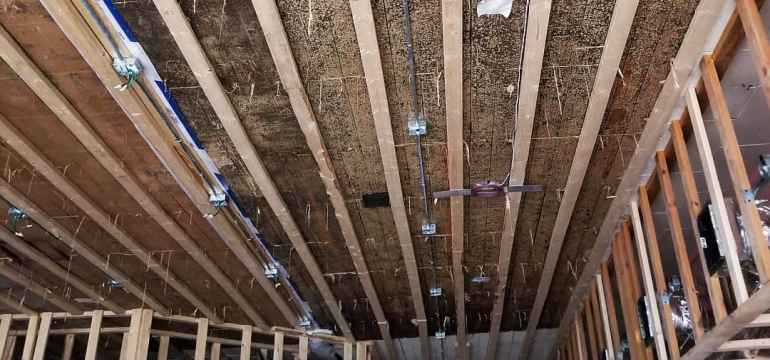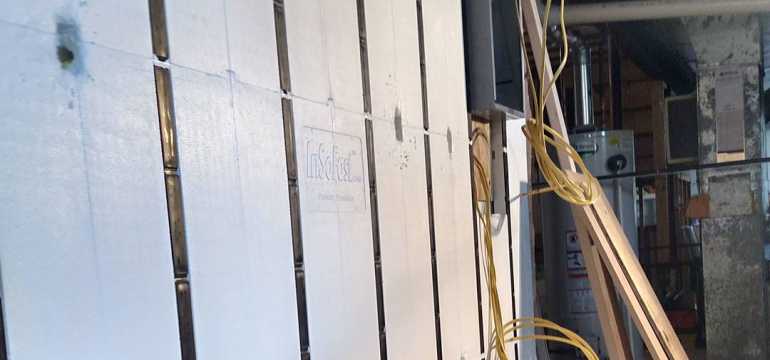Finishing the basement in your home provides you with more usable space, and it boosts the resale value of your property. However, to put in drywall, you’ll have to have framing or studs to support the slabs of sheetrock—and that part of the process can be extremely labor-intensive.
As you investigate the work involved, you may begin to feel overwhelmed with the massive amount of time, money, and materials required actually to complete the job. What if there were other options besides the standard drywall? Consider these top alternatives to drywall in basement renovation.
Basement wall options instead of drywall studs
As you’re looking for alternatives to drywall in your basement, you’ll find that in order to skip the drywall, you’ll first have to find something to use instead of traditional studs. Sure, you could simply paint over the concrete and call it finished, but then you’re likely to experience moisture problems and temperature control issues.
It’s best to take the time to install a moisture barrier, insulation, and some underlying structure for those basement walls. Explore the available options, including furring strips and steel frames, to see what might be right for your timetable and goals.
Steel frames

You’ll often see home improvement experts mentioning steel frames as an alternative to studs. In small or low-ceilinged spaces where it’s tough to do wood framing, the steel frames are easier to place. You can use them in a basement of any size, however.
For this type of framing, you’ll likely use a load-bearing track with accompanying steel studs. Since the pieces are more modular, they are easier to erect and to adapt to the wall space you have available. They’ll also be termite-resistant beyond the capability of wooden studs.
Furring strips

If you want to skip the studs and drywall altogether, you just need some basic structure for your basement walls. Furring strips can offer that rigid support. In their simplest form, furring strips are 1-inch by 3-inch pieces of wood. Apply a vapor barrier first, then affix the strips directly to the concrete walls of the basement using masonry nails. Be sure to apply the furring strips carefully, spacing them evenly along the walls.
Foam insulation

Remember, you’ll also need some foam sheet insulation to ensure the comfort, usability, and longevity of your basement area. One type of foam insulation comes from InSoFast, which promises quick, easy install for DIY homeowners.
InSoFast offers panels that are 2 feet by 4 feet, interlocking for tight, secure placement. The UX 2.0 panels are two inches thick and are designed to comply with the most basic requirements to bring a finished basement up to code. If you’re looking for a fast, easy way to finish your basement renovation, a solution similar to InSoFast might be worth investigating.
You’ll find that most suppliers of insulation panels have several products available at various price points. If the base-level panels aren’t thick enough or don’t provide enough insulation for your purposes, you can go up a level or two and purchase tougher, thicker, better-insulated pieces.
What to use instead of basement drywall
Now that you have the underlying structure and insulation in place, you’re ready to finish your basement walls. Leaving the bare insulation open to view is both ugly and impractical, so you’ll need an attractive covering to finish the look. Paneling or a custom finish are two of the most popular alternatives to drywall in the basement.
Paneling
Modern paneling doesn’t have to look like your grandma’s wood paneling. Check online or stop by a local home improvement store to see all the varieties of beautiful paneling that are available today, including textured options or reinforced fiberglass. Plastic paneling often handles shifts in temperature more easily than standard drywall. Choose a variety that’s designed to expand or contract without ruining the look of your walls.
Custom finish
If you’d rather not do the finishing of the basement yourself, you can always hire a custom finishing company to handle it for you. These contractors will complete the work to your specifications, using materials and solutions that fit your budget.
Be sure you choose a company that offers plenty of alternatives to drywall in the basement, such as wood planks, plywood paneling, pegboard, lath and plaster, cement board, or brick and masonry. Ask for before and after photos of the projects the contractor has previously completed, so you can see what your space might look like when they’re finished with it.
Installing basement wall options instead of drywall
As you move forward with your renovation plan for your basement, remember to do your research ahead of time.
If you’re not sure about an aspect of the process, call a trusted friend with experience in placing alternatives to drywall in basements, or contact an expert to complete the job for you. With creativity and a bit of labor, you can successfully transform your basement from a raw, unfinished area into a livable, enjoyable space.
- How to Cut Lexan - September 25, 2020
- Mineral Spirits vs. Mineral Oil - September 25, 2020
- Shellac vs. Polyurethane - September 24, 2020
